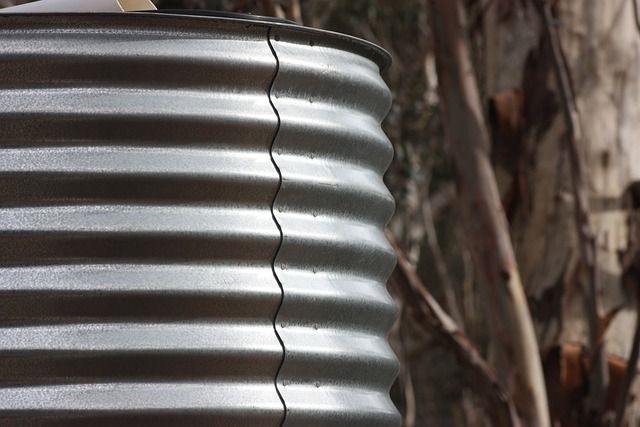Living off-grid is becoming increasingly popular, as people are looking for ways to reduce their environmental footprint and become more self-sufficient.
In this article, we will explore the concept of off-grid homes, how they work, and the benefits they offer.
Off-grid homes, also known as self-sufficient homes, are homes that are not connected to the public electricity grid. Instead, they generate their own electricity using solar panels, wind turbines, or other renewable energy sources. These homes also typically rely on rainwater collection and treatment systems for their water supply, and on-site waste management systems such as treatment tanks and septic systems.
Living off-grid has many benefits. For one, it allows homeowners to reduce their carbon footprint by using renewable energy sources and minimising their reliance on fossil fuels.
Additionally, off-grid homes offer a degree of self-sufficiency and independence that is difficult to achieve when connected to the public grid. Finally, off-grid living can save homeowners money in the long run, as they are not subject to the rising costs of utility bills.
It's worth noting that building an off-grid home requires careful planning and consideration. There are many factors to take into account, such as location, site orientation, and the materials used in construction.
Passive design for an energy efficient home
Passive design refers to designing a home to reduce or eliminate the need for mechanical heating and cooling. This can be done by optimising the layout of the house to take advantage of natural light, using insulation to reduce heat loss in the winter and heat gain in the summer, and building with materials that have high thermal mass.
Additionally, passive solar heating can be used to reduce energy consumption. Passive design not only saves money on energy costs, but it also reduces your carbon footprint.
Location
Location is an important consideration for off-grid homes, as it can have a significant impact on the amount of solar or wind energy that can be generated. For example, homes in shaded areas or regions with low wind speeds may struggle to generate enough energy to meet their needs. It's also important to consider factors such as access to water and waste disposal, as these can be challenging in remote locations.

Site Orientation
Site orientation is another important consideration. The orientation of the home can impact the amount of sunlight it receives, which can have a significant impact on the efficiency of the solar panels. Homes with a north-facing orientation are generally considered to be the most efficient, as they receive the most sunlight throughout the day.
Designing a home with the main living areas facing south can maximise the amount of natural light and solar heat gain. Also, consider designing the home to incorporate a central atrium, which can act as a natural ventilation system, reducing the need for air conditioning and reduce your power consumption and electrical costs.

Building materials
The materials used in construction are also an important consideration for off-grid homes. Materials that are sustainable, renewable, and locally sourced are generally preferred, as they reduce the environmental impact of the home and support local businesses. Additionally, materials that are well-insulated and have a high thermal mass can help to regulate the temperature inside the home, reducing the need for heating and cooling.

Natural ventilation
You should also consider natural ventilation when designing your off grid home. Natural ventilation is when outside air flows freely through the house, providing a climate-based atmosphere. Not only is this great for keeping the air fresh in your home, but it's also more energy-efficient than relying on air conditioning and heating all day long.
Here are some of the benefits of natural ventilation:
- It reduces the amount of heat in your home, making for a cooler atmosphere on hot days.
- It provides a steady flow of oxygen and reduces levels of indoor air pollution, helping to keep you and your family healthy.
- It helps reduce humidity levels in your home, which can help prevent mould growth and damage to furniture and other materials.
When you're designing the ventilation system for your off grid home, you'll want to make sure that there is enough natural airflow to circulate throughout your home and that windows are placed at strategic spots to maximise on this airflow. Additionally, you should make sure that the openings are large enough to let in adequate amounts of air without creating too much noise or drafts.

Design & layout
In terms of design, off-grid homes can take many forms, from traditional cabins to modern eco-homes. However, there are some design principles that are common to many off-grid homes. For example, open-plan living spaces can help to reduce the need for lighting and heating, while high ceilings can help to regulate the temperature inside the home. Additionally, homes with a small footprint are generally preferred, as they require less energy to heat and cool.

Off Grid Power
One of the main considerations when you're planning an off grid home is your power source. Your options include solar panels, batteries and inverters, LED lighting and energy monitors—each of which might require a different approach and cost different amounts of money.
When you're making your decision about what sort of power to use for your off grid home, it all comes down to how much energy you need, how much it will cost in the long-term, and how difficult it will be to install.
Solar Panels
Solar panels are a popular choice for off grid homes. They take advantage of the sun's energy to generate electricity, so you don't need to rely on the power lines for your energy. Plus, they are relatively easy to install since there are no wires or special tools required. However, you'll need to make sure that your roof has enough space for all the panels that you need and that they're tilted at the right angle to get the most out of them.
Batteries & Inverters
Batteries and inverters can be used in conjunction with solar panels in order to help store any excess energy that your solar panels produce during the day so that it can be used at night or when you need more than what the sun can provide. The downside is that batteries and inverters tend to be more expensive than just using solar panels alone, but if you want extra energy reserves then this could be a good option for you.
Wind turbines
Wind turbines are also a good option in areas with consistent winds, and can generate significant amounts of energy. A combination of solar and wind power can provide a reliable and sustainable source of energy for an off-grid home.

Off Grid Water
Going off grid means finding sustainable, self-sufficient ways of managing your water supply. When it comes to waste water, there is one key consideration you should take into account: how to pump it out of your home. To do so, you can use an electronic pressure system or a solar water pump.
An electronic pressure system connects with the main drain line and will constantly maintain the water pressure level required for water lines. This is one of the most popular systems because its operation is fairly simple and reliable - all you need to do is provide power to the motor and switch it on.
Alternatively, if you're looking for something a bit more environmentally friendly and cost-effective in the long run, you should consider installing a solar water pump. It will require more upfront expenses but will save you money in energy costs over time, since it's powered by solar panels that rely solely on free energy from the sun. Plus, this type of pump doesn't need maintenance or service like some other pumps do, which further reduces its costs over time.
Rainwater collection systems are a popular choice, as they allow homeowners to collect and use rainwater for domestic purposes such as showering, washing dishes, and flushing toilets. These systems typically involve the installation of a collection tank, a filtration system, and a pump to distribute the water throughout the home.

Greywater systems
Greywater systems take all the wastewater from bathrooms, showers, laundry and other common household activities and filter it through gravel beds or similar setups before disposing it safely into the soil. This process can be used both on its own or in conjunction with septic systems to maximize efficiency while minimizing waste water runoff.
Composting toilets are a popular choice, as they allow homeowners to turn their waste into compost that can be used in their gardens.
Greywater systems such as treatment tanks and septic systems (not as common these days) are also commonly used, which involve treating wastewater from sinks, showers, and washing machines for reuse in irrigation or toilet flushing.
How can I get started and build an off-grid home of my own?
Building an off-grid home can seem daunting, but with the right information, it can be an enjoyable and rewarding experience. First, research the regulations and building codes in your area to ensure that you are complying with all laws and regulations.
Then decide on a budget as this will determine the size of your home or the types of materials and construction methods you can use.
Next, start planning the design and layout of your off-grid home. Consider hiring a professional architect or builder who specializes in off-grid homes.
Finally, choose the right materials and systems to ensure that your off-grid home is sustainable and efficient and within your budget.

Self sufficiency
Living off-grid requires a certain level of self-sufficiency and resourcefulness. Homeowners must be able to manage their own energy, water, and waste systems, and must be prepared for potential power outages or system failures. However, the benefits of off-grid living can be substantial, offering a more sustainable, independent, and cost-effective way of life.
Conclusion
In conclusion, off-grid homes offer a sustainable and self-sufficient way of living that is becoming increasingly popular in Australia. By generating their own electricity, collecting and treating rainwater, and managing their waste on-site, homeowners can reduce their carbon footprint and achieve a degree of independence that is difficult to achieve when connected to the public grid.
While off-grid living requires a certain level of self-sufficiency, the benefits can be substantial and long-lasting.







